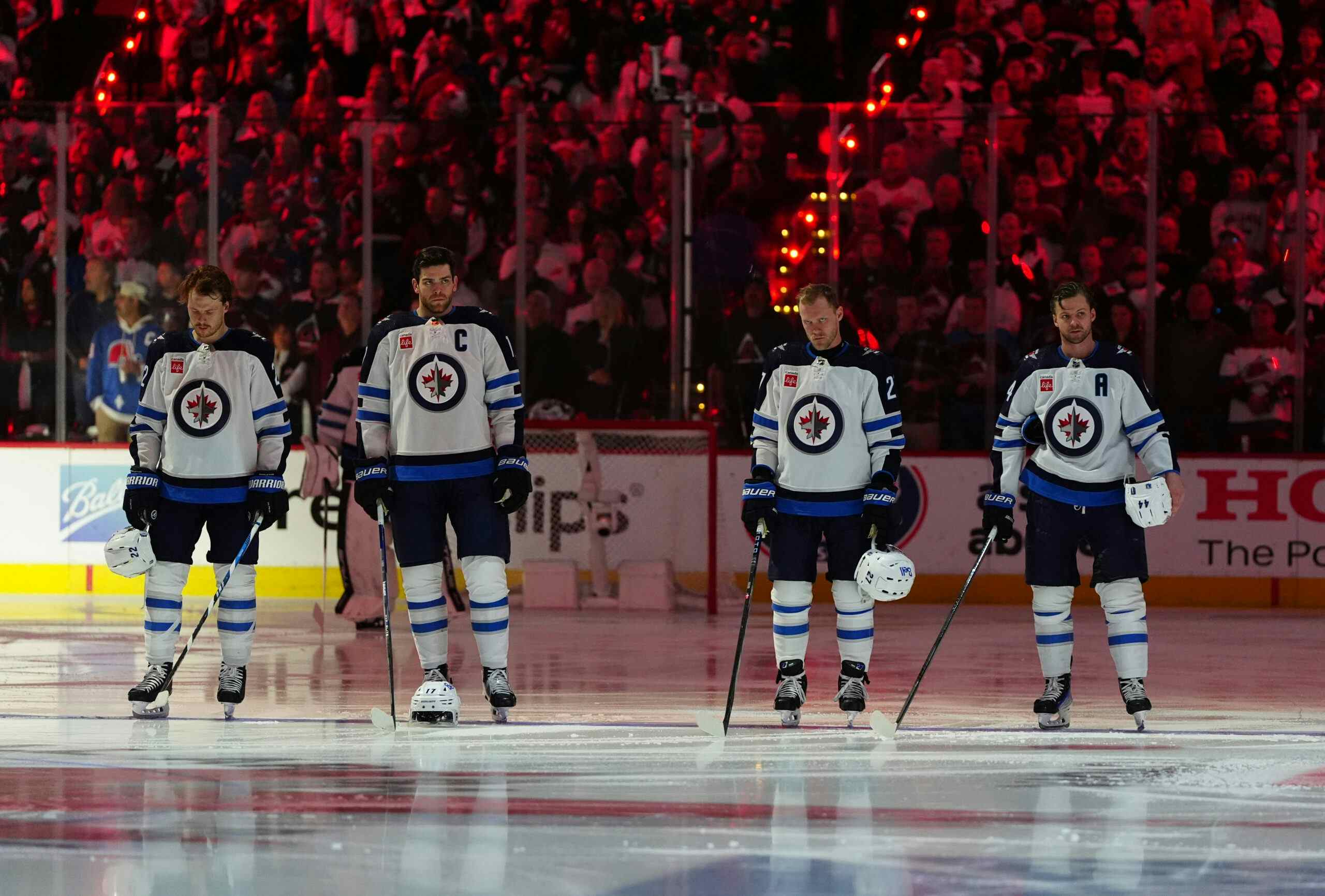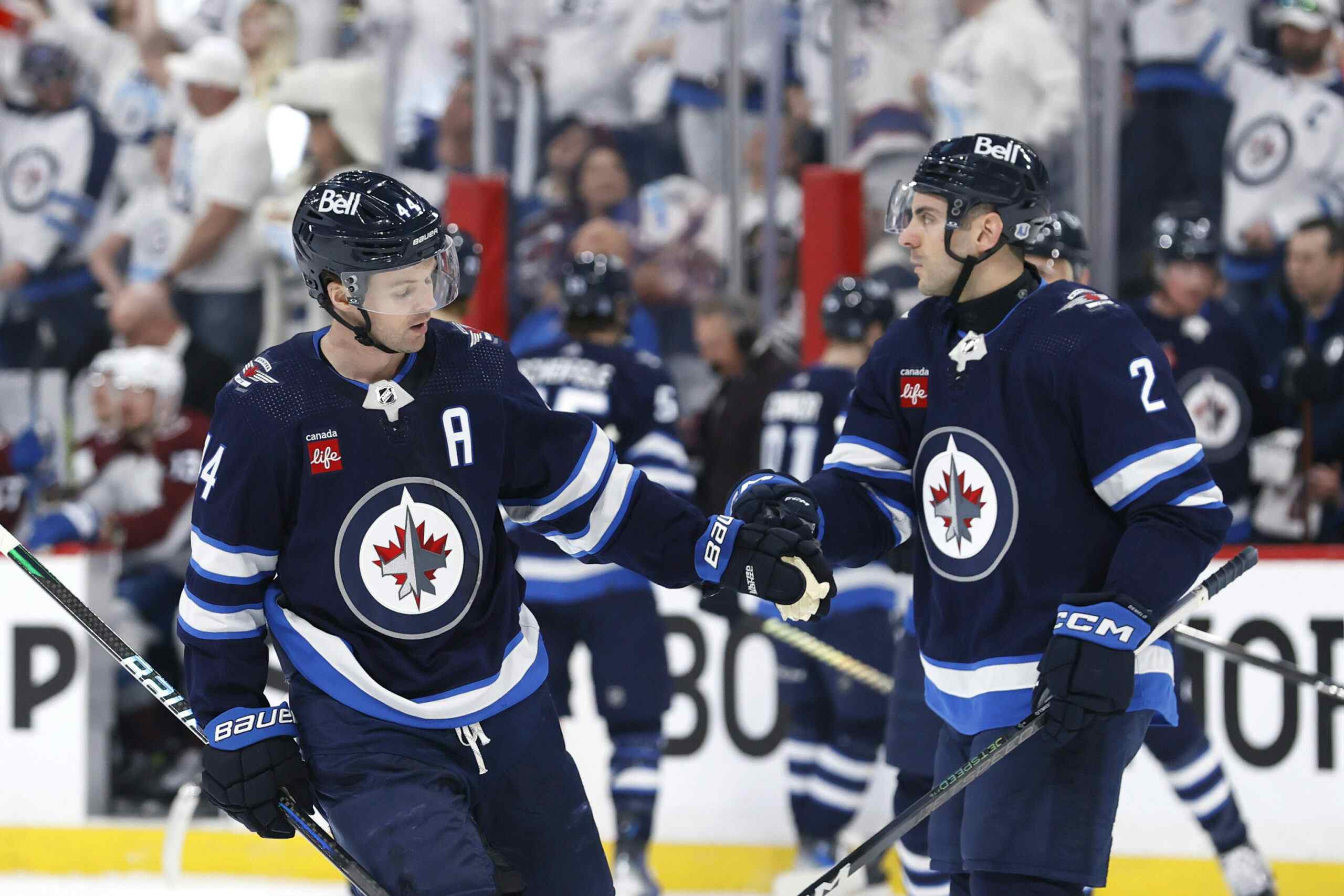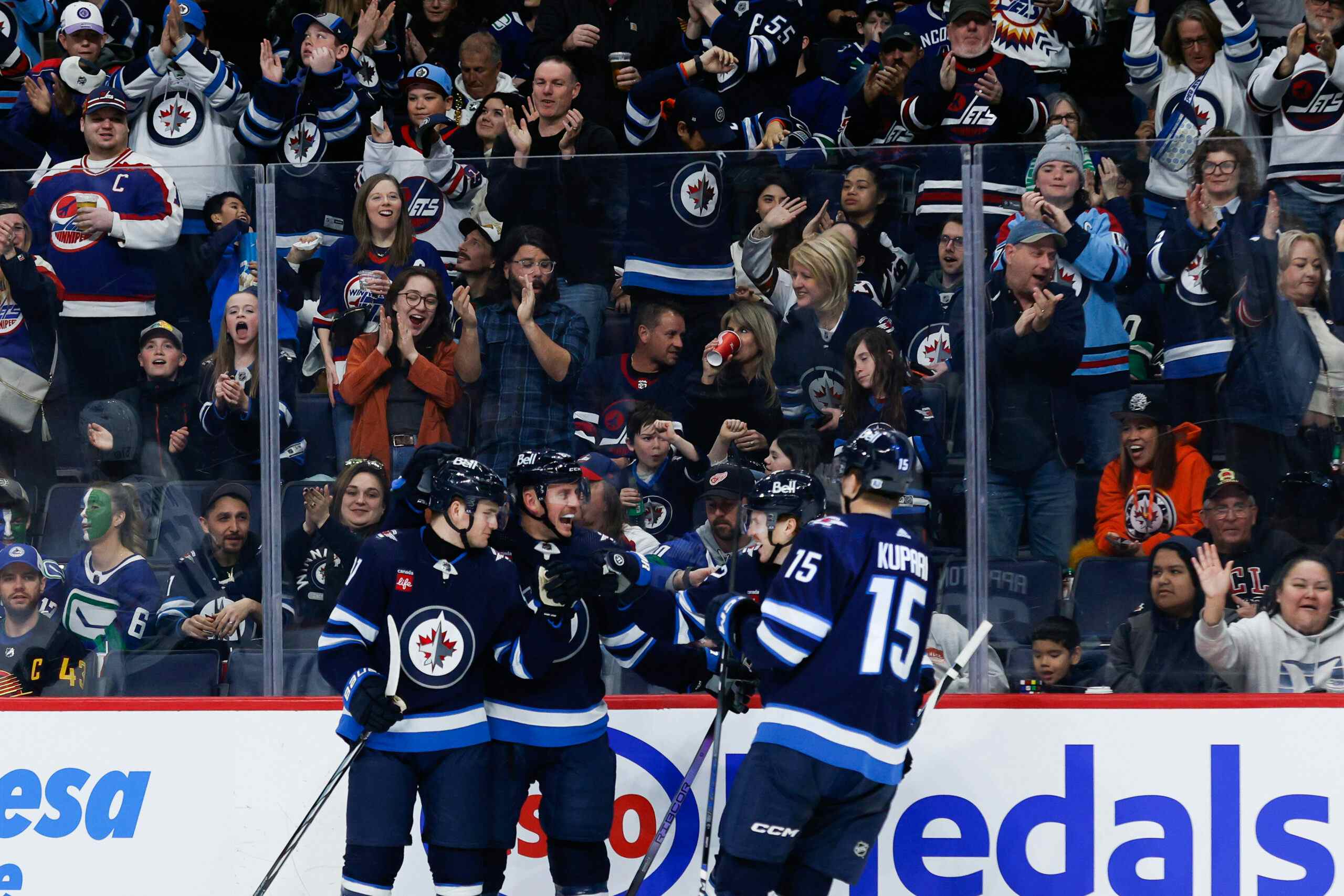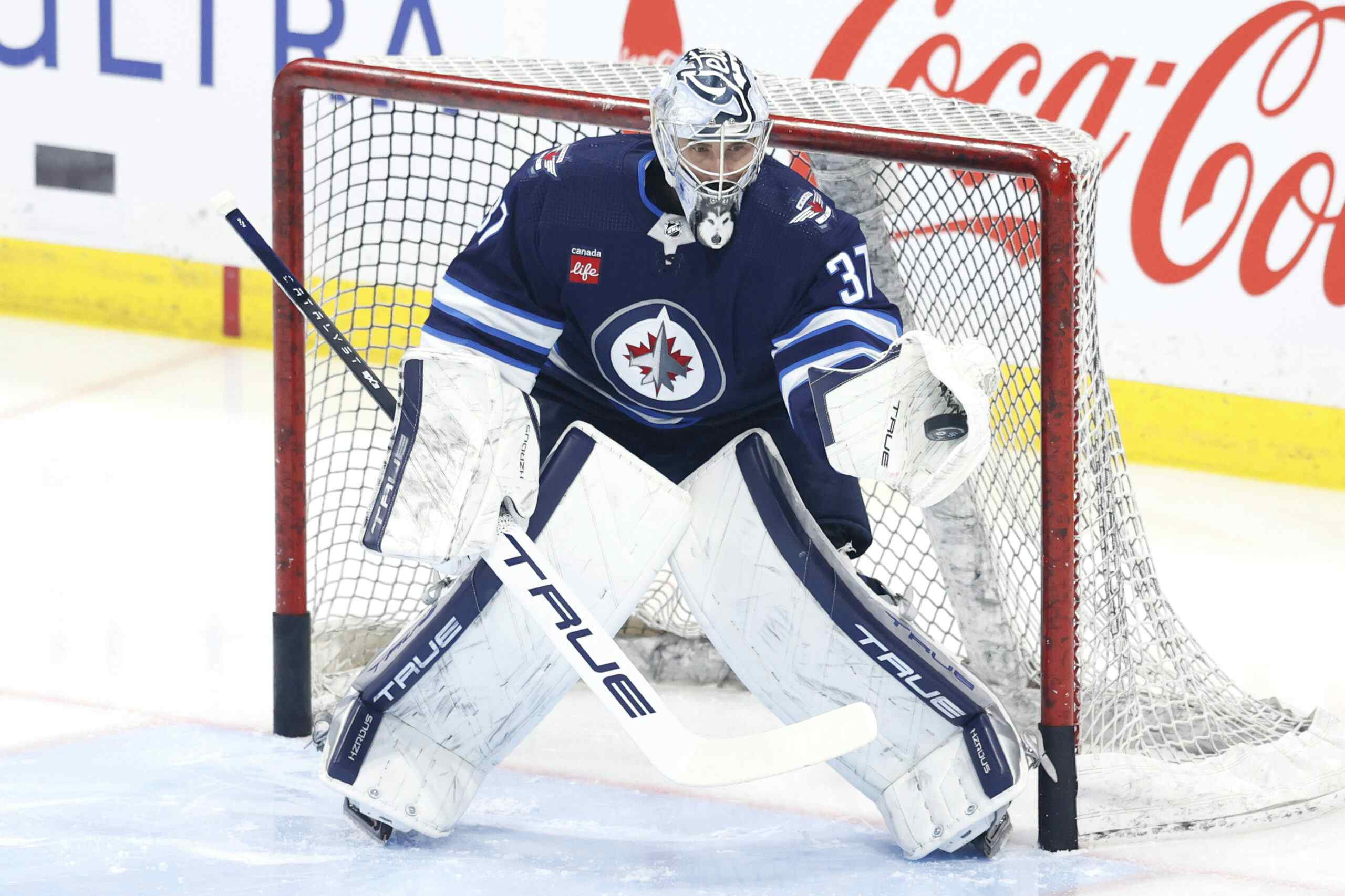Who are the Winnipeg Jets 2.0 best defensive pair
By Garret Hohl
9 years agoChemistry in hockey is real. Different players have different skill sets and some of these may compliment other players. While overall skill and impact is still the major driving force of results, there are more ephemeral factors – like chemistry – that can push the needle one way or another.
One way to look at chemistry is by looking at how players perform with or without particular players (WOWYs) as well as at certain trends.
Let’s use this tool to compare some of the Winnipeg Jets top defensive pairs.
Hockey is a difficult sport to model statistically because there are so many factors going on that makes situations non-equitable.
You can try to level the playing field as much as possible, but often that means making imprecise adjustments or limiting the sample. Sometimes you just have to hold your nose and qualify appropriately.
I wanted to look at the Jets best defensive pairs, but control team, quality of linemate, quality of competition, and offensive zone deployment as much as possible. I still wanted to keep as much of the sample as possible too.
What I did was look at the Jets three top pairs, but only for minutes where the top line was on the ice. Specifically the numbers are for when Andrew Ladd and Bryan Little were with either Michael Frolik or Blake Wheeler.
The Ladd-Little-Wheeler and Ladd-Little-Frolik lines have been equally effective in terms of posting positive shot attempt differentials. The former line has carried a 54.5 Corsi percentage, while the later has carried a 54.2 Corsi percentage.
Looking exclusively at minutes with the top line severely diminishes the distribution of usage impact.
The other player that stays consistent is Tobias Enstrom. The pair that has carried Enstrom on the Jets has always been the Jets top pair in deployment and ice time. He’s also undisputedly the best left-shot defensemen on the roster by a large margin.
Here are the Jets three main right-shot defenders with Enstrom, Ladd, Little, and one of Frolik or Wheeler on the ice:

Over the long run, we expect goal differentials to move towards Corsi percentage. This is true even for the most extreme cases. The goal numbers were still added to give context on how small goal samples are and also why some perceptions may exist.
The Tobias Enstrom – Dustin Byfuglien pair, sometimes lovingly denoted as Buffstrom, has been the best pairing out of the three. It is also pretty safe to assume some poor “puck luck” is involved in their negative goal differential since every single player (including the forwards) had both a better shooting and save percentage apart from that particular 5-man group than they did when they were together.
The sample is small and returns are early, but this just adds to the evidence that Myers has been a good fit for the Jets. The Jets still carry Byfuglien on their blue line, who still performs well enough to pull up Grant Clitsome or Ben Chiarot to nearly –but not quite– the same level as Buffstrom. Now they also have Myers who has performed better than Bogosian in similar situations.
What is it that makes Buffstrom such a highly effective partnership?
For one, statistically they are quite complementary.

(Graph courtesy of Own The Puck)
The graph on the left includes Byfuglien’s minutes as a defender and as a forward. Buff has long been a strong shot volume promoter but lacks in shot suppression. While that trend is true in both versions of Byfuglien, the difference is that the defender version sits in the plus column while the forward version lies in the minus column.
While Tobias Enstrom’s diminutive stature and above average scoring leads many to typecast the Swede as an offensive defensemen, Enstrom’s strongest impact on the game is his ability to repress shots against.
You have one guy who excels in shot volume and another in shot suppression. You put them together and you get elite results where the whole is better than the sum of its parts.
Both move the puck well. Over the past season, Enstrom and Byfuglien were two of the three most successful Jet defenders in exiting the zone per puck touch, with Jacob Trouba being the other, and both were the least likely to turnover the puck per puck touch in the defensive zone.
At the other end of the ice, Byfuglien has performed superiorly in gaining the offensive zone with control, while Enstrom has a knack at sustaining longterm pressure.
Of course, intangibles exist in hockey.
Well, actually, they are latent variables. An intangible is something the senses cannot detect, like intellectual property or copyright. A latent variable is something that cannot be directly measured, but impacts things that can be measured.
I’ve always been a supporter of latent variables in hockey, and one of them is chemistry.
The Jets have seen their best results with Enstrom and Byfuglien on the ice together. Whether it’s better for them to be together or separated though depends on the chemistry of others as well…. but that is for next time.
All numbers are from Puckalytics and are for 5-on-5 situations unless otherwise stated.
Recent articles from Garret Hohl





